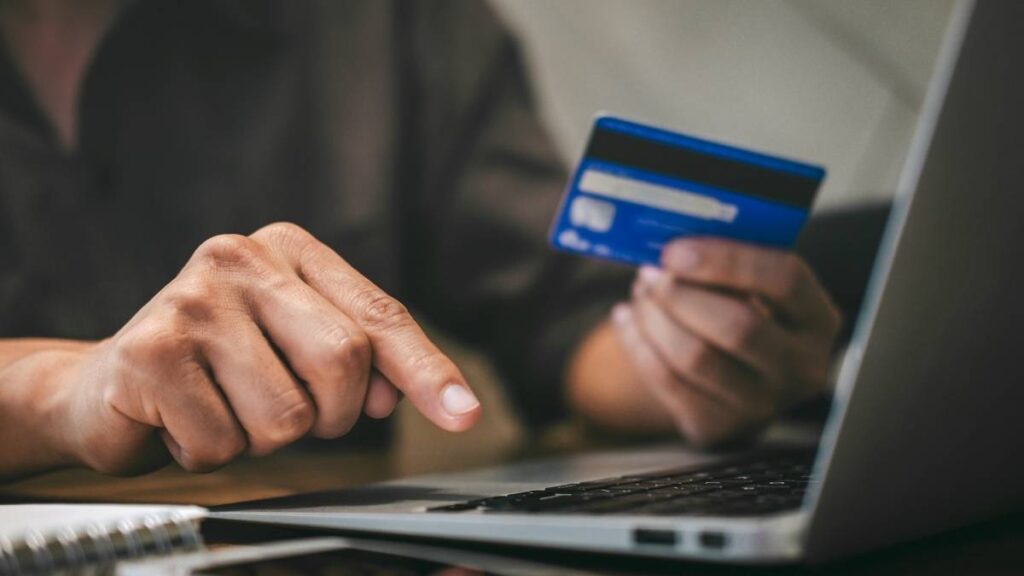
Credit card fraud types are a growing concern for everyday consumers, online shoppers, and small business owners. Knowing the different ways criminals steal and misuse credit card information can help you stay one step ahead. From sneaky online scams to physical theft, fraudsters use clever tactics to exploit your financial details. This blog post breaks down the most common credit card fraud types in simple terms, so you can protect your money and peace of mind. Whether you’re shopping online or running a small business, understanding these threats is the first step to staying safe in 2025.
What Is Credit Card Fraud?
Credit card fraud happens when someone uses your credit card or card details without your permission to make purchases or steal money. It’s a form of financial theft that can hit both consumers and businesses hard. For individuals, it might mean unauthorized charges or drained accounts. For small businesses, fraud can lead to lost revenue, chargeback fees, and damaged trust. According to recent trends, credit card fraud losses worldwide reached billions in 2024, with online scams becoming more common as digital shopping grows. By learning about credit card fraud types, you can spot warning signs early and take action to protect yourself.
Most Common Credit Card Fraud Types
Fraudsters use a range of tactics to steal your card information or trick you into handing it over. Below, we’ll explore the most common credit card theft methods, how they work, and practical ways to avoid them.
Card-Not-Present (CNP) Fraud
What It Is: Card-not-present (CNP) fraud happens when a criminal uses your credit card number for online, phone, or mail-order purchases without needing the physical card. It’s one of the most common credit card fraud schemes because online shopping is so popular.
How It Works: Thieves get your card number, expiration date, and security code (often through data breaches or phishing). They use this info to buy goods or services online, often on unsecured websites. Since the physical card isn’t swiped, it’s harder for merchants to verify the user.
How to Avoid It:
- Shop only on secure websites (look for “https” and a padlock icon).
- Avoid saving card details on websites or apps.
- Use virtual card numbers for online purchases if your bank offers them.
Lost or Stolen Card Fraud
What It Is: This type of fraud occurs when someone physically steals your credit card or finds one you’ve lost and uses it to make purchases.
How It Works: A thief gets hold of your card and uses it at stores, restaurants, or ATMs before you report it missing. Quick purchases, like gas or small retail items, are common since they often don’t require ID.
How to Avoid It:
- Keep your card in a secure place, like a wallet or RFID-blocking sleeve.
- Report a lost or stolen card to your bank immediately.
- Set up text or email alerts for every transaction to catch unauthorized use fast.
Skimming
What It Is: Skimming involves stealing your card information using hidden devices attached to card readers, like those at ATMs, gas pumps, or retail checkouts.
How It Works: Fraudsters place a small device (a skimmer) over a legitimate card reader to capture your card’s magnetic strip data. They may also use hidden cameras to record your PIN. The stolen info is then used to create fake cards or make online purchases.
How to Avoid It:
- Check card readers for loose or unusual attachments before using them.
- Use ATMs in well-lit, secure locations, like inside banks.
- Cover the keypad when entering your PIN to block hidden cameras.
Phishing and Social Engineering
What It Is: Phishing and social engineering scams trick you into sharing your credit card details through fake emails, text messages, or phone calls.
How It Works: A fraudster might send an email pretending to be your bank, asking you to “verify” your card details on a fake website. Or they may call, posing as a customer service rep, and ask for your card number. These scams rely on creating urgency or fear to make you act quickly.
How to Avoid It:
- Never click links or share card info in response to unsolicited emails or texts.
- Verify suspicious requests by calling your bank directly using the number on your card.
- Use strong, unique passwords for online banking to prevent account access.
Account Takeover
What It Is: In an account takeover, a criminal gains access to your existing credit card account and uses it to make fraudulent transactions.
How It Works: Thieves steal your login credentials (often through phishing or data breaches) and change your account’s password, address, or contact info. They may add new cards to your account or transfer funds. This can go unnoticed if you don’t check your account regularly.
How to Avoid It:
- Use two-factor authentication (2FA) for your bank and card accounts.
- Monitor your account for unfamiliar changes, like new addresses or cards.
- Update passwords regularly and avoid reusing them across sites.
Fake Credit Card Generation (BIN Attack)
What It Is: BIN attacks involve criminals using software to generate fake but valid credit card numbers based on a card’s Bank Identification Number (BIN).
How It Works: The BIN is the first six digits of a card number, identifying the issuer (e.g., Visa, Mastercard). Fraudsters use algorithms to guess valid card numbers, expiration dates, and security codes, then test them on merchant sites. This is often used to exploit weaknesses in payment systems.
How to Avoid It:
- Use banks with strong fraud detection systems that flag unusual activity.
- Avoid sharing card details with unverified merchants.
- Enable transaction alerts to catch suspicious charges early.
Application Fraud
What It Is: Application fraud happens when a criminal uses stolen personal information to apply for a new credit card in your name.
How It Works: Thieves gather your details (like name, Social Security number, or address) from data breaches, phishing, or even discarded mail. They apply for a card, which is sent to a new address, and use it before you realize. This can damage your credit score if unpaid.
How to Avoid It:
- Freeze your credit with major bureaus to block unauthorized applications.
- Shred documents with personal info before throwing them away.
- Check your credit report regularly for unfamiliar accounts.
How to Protect Yourself from Credit Card Fraud
Staying safe from credit card fraud types doesn’t have to be complicated. By adopting smart habits and using available tools, you can reduce your risk. Here are practical tips to keep your finances secure:
- Enable fraud alerts with your bank: Most banks offer free alerts for suspicious activity. Sign up for texts or emails to monitor your account in real time.
- Don’t share card info online or via phone unless trusted: Only provide details to reputable merchants or verified customer service reps.
- Use credit cards on secure websites only: Check for “https” and a padlock icon in the browser before entering card details.
- Regularly check your statements: Review your transactions weekly to spot unauthorized charges quickly.
- Report lost or stolen cards immediately: Call your bank as soon as you notice your card is missing to limit damage.
- Use contactless or mobile wallet payments: Options like Apple Pay or Google Wallet use encrypted tokens, making them harder to skim.
FAQs About Credit Card Fraud Types
What is the most common type of credit card fraud?
Card-not-present (CNP) fraud is the most common, especially with the rise of online shopping. Criminals use stolen card details for purchases without needing the physical card, making it a widespread issue.
Can banks refund money lost to card fraud?
Yes, most banks have zero-liability policies for unauthorized transactions, meaning you won’t be held responsible if you report the fraud promptly. Contact your bank immediately to start the refund process.
How can I tell if someone is using my credit card?
Look for unfamiliar charges on your statements, alerts for transactions you didn’t make, or changes to your account (like a new address). Regular monitoring and fraud alerts help you catch issues early.
Conclusion
Understanding credit card fraud types is key to protecting your money and personal information. From card-not-present scams to skimming and phishing, fraudsters use a range of tactics to exploit consumers and small businesses. By staying informed about common credit card fraud schemes and adopting simple habits—like monitoring your accounts, using secure websites, and reporting issues quickly—you can reduce your risk. Stay proactive, enable fraud alerts, and keep an eye on your statements to catch problems early. With these steps, you’ll be better equipped to safeguard your finances in 2025 and beyond.

Emma Rose is a U.S.-based personal finance writer and a regular contributor at Cardix.us. She focuses on topics like credit cards, credit scores, and everyday money management. Emma’s writing makes complex financial concepts simple and practical, helping readers make smarter credit and spending decisions with confidence.

